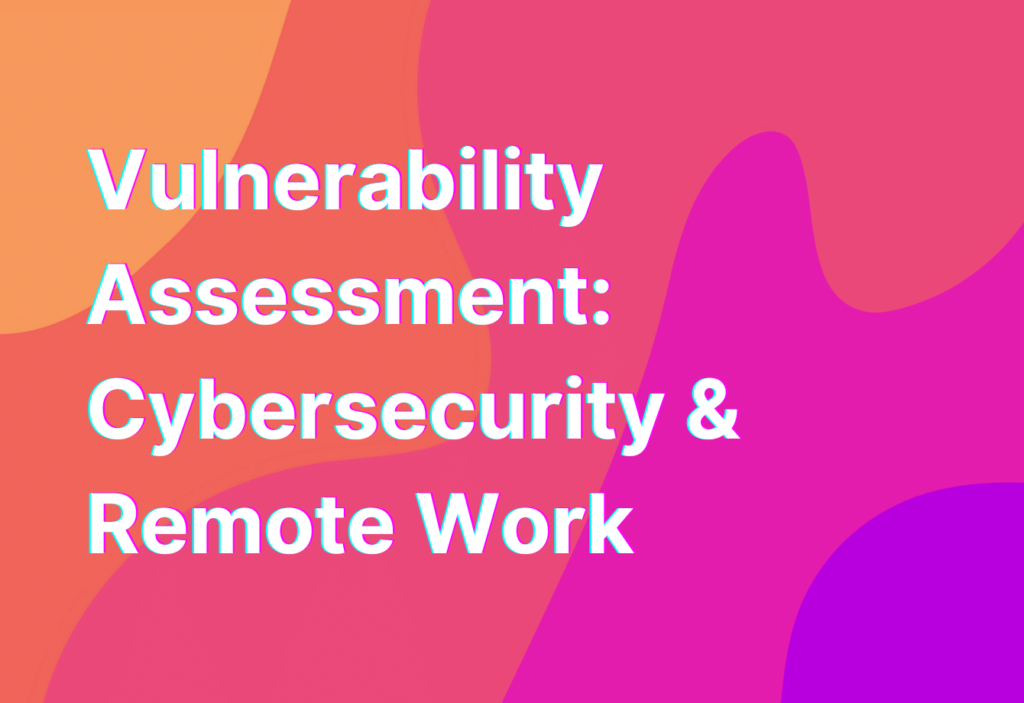Vulnerability Assessment: Cybersecurity & Remote Work
Hey there, remote work warriors! It’s Ashley here, your friendly remote work advocate with another informative blog post. Today, we’re diving into the world of vulnerability assessment and its importance in maintaining cybersecurity while working remotely. So grab your favorite cup of coffee and let’s get started!
What is Vulnerability Assessment?
Before we delve into the nitty-gritty details, let’s start with the basics. Vulnerability assessment, also known as vulnerability scanning, is the process of identifying and evaluating potential security vulnerabilities in a system or network. It helps organizations identify weaknesses in their infrastructure, applications, or processes that could be exploited by cybercriminals.
Now, you might be wondering, “Why is vulnerability assessment important for remote work?” Well, my friend, the answer lies in the unique challenges that remote work presents in terms of cybersecurity.
The Challenges of Remote Work
Working remotely offers numerous benefits, such as flexibility and increased productivity. However, it also comes with its fair share of challenges, especially when it comes to cybersecurity. Let’s take a look at some of these challenges:
- Unsecured Wi-Fi Networks: When working remotely, we often rely on public Wi-Fi networks, which can be a breeding ground for cyber threats. It’s crucial to take necessary precautions to secure your Wi-Fi connection. Check out this Wi-Fi security guide for some essential tips.
- Phishing Attacks: Cybercriminals are getting craftier by the day, and phishing attacks have become increasingly sophisticated. Remote workers are often targeted through phishing emails or messages, posing a significant risk to sensitive data.
- Device Security: With remote work, your devices become your lifeline. It’s essential to ensure that your devices are secure, regularly updated, and protected with strong passwords or biometric authentication.
- Data Leakage: Remote work often involves sharing sensitive information over various communication channels. It’s crucial to be mindful of data leakage risks and take necessary measures to protect confidential data.
- Employee Awareness: Remote workers need to be educated and aware of cybersecurity best practices. From recognizing phishing attempts to using secure communication tools, employee awareness plays a vital role in maintaining a secure remote work environment.
The Role of Vulnerability Assessment in Remote Work
Now that we understand the challenges, let’s talk about how vulnerability assessment can help mitigate these risks. By conducting regular vulnerability assessments, organizations can:
- Identify potential vulnerabilities in their remote work infrastructure, such as unpatched software or misconfigured systems.
- Assess the effectiveness of existing security controls and identify areas for improvement.
- Stay one step ahead of cybercriminals by proactively addressing vulnerabilities before they can be exploited.
- Ensure compliance with industry regulations and standards.
- Enhance the overall security posture of their remote work environment.
By regularly assessing vulnerabilities, organizations can take proactive measures to strengthen their cybersecurity defenses and protect sensitive data.
Best Practices for Vulnerability Assessment
Now that we’ve established the importance of vulnerability assessment let’s take a look at some best practices to ensure its effectiveness:
- Regular Scanning: Conduct vulnerability scans on a regular basis to identify any new vulnerabilities that may have emerged.
- Patch Management: Keep your systems and software up to date with the latest patches and security updates to address known vulnerabilities.
- Network Segmentation: Implement network segmentation to limit the impact of a potential breach and prevent lateral movement within your network.
- Employee Training: Educate your remote workforce about cybersecurity best practices, such as recognizing phishing attempts and using secure communication tools.
- Penetration Testing: Consider conducting penetration testing to simulate real-world cyber attacks and identify vulnerabilities that may have been missed during regular scans.
Remember, vulnerability assessment is an ongoing process, and it’s essential to regularly review and update your security measures to stay ahead of evolving threats.
Wrapping Up
Well, folks, we’ve reached the end of our vulnerability assessment journey. We’ve explored the challenges of remote work, the role of vulnerability assessment in maintaining cybersecurity, and some best practices to follow. Remember, staying vigilant and proactive is key to keeping your remote work environment secure.
If you want to dive deeper into the world of remote work cybersecurity, don’t forget to check out our Wi-Fi security guide for some essential tips. Stay safe out there, and until next time!


